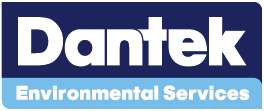Managing and Maintaining Hot and Cold Water Systems
Hot and cold water systems are crucial for the smooth operation of establishments in the hospitality industry, including hotels, pubs, restaurants, and bars. From providing drinking water to facilitating washing and supporting various industrial activities, these systems play a fundamental role in ensuring the comfort and hygiene standards of your guests and staff. However, to maintain their functionality and safety, proper care and attention are imperative. One significant concern that hospitality businesses must address is the presence of legionella bacteria, which can pose serious health risks if allowed to proliferate in the water supply. If you ever have any problems or questions, just give us a call at 01454 417 920.
Ensuring Safe Cold-Water Systems
Cold water storage tanks
Cold water storage tanks play a vital role in supplying water throughout a building. An annual inspection of these tanks is necessary to assess their condition both internally and externally. During the inspection, attention should be paid to the tank’s lid, insect screens, thermal insulation, and the cleanliness of the water surface. Any faults or contamination should be promptly addressed through cleaning, disinfection, and necessary repairs. If you notice any cracks or damage, don’t hesitate to contact us at 01454 417 920 for assistance. Cracking in tanks is becoming a significant issue, but we’re here to help address any concerns.
Hot and cold water systems checklist!
- Inspect cold water storage tanks annually and perform any necessary remedial work.
- Check tank water temperatures annually, especially during the summer months.
- Monitor temperatures at sentinel taps monthly and take additional temperature readings quarterly.
Monitoring and Temperature Control:
Regular monitoring of cold water systems is essential to detect any deviations from safe operating parameters. Sentinel draw-off points, such as taps furthest and nearest to the supply or storage tank, should be monitored for temperature and disinfectant concentration. This helps ensure that water temperatures remain below 20°C within two minutes of running the cold tap, minimizing the risk of Legionella growth.
Flushing and Flow Management:
To prevent water stagnation in sections prone to inactivity, regular flushing of infrequently used outlets is recommended. Flushing these outlets for several minutes on a weekly basis can significantly reduce the risk of Legionella production. Additionally, maintaining a record of total cold water consumption over a typical day can help confirm adequate water flow through the system.
Temperature profiling
Temperature profiling is a useful tool for verifying that water distribution systems maintain safe temperatures throughout. By monitoring temperatures at representative points, such as sentinel taps and other outlets, a comprehensive temperature profile of the entire system can be created over time.
Hot Water Systems
In the hospitality industry, hot water systems require meticulous attention. Close attention should be given to the flow and return temperatures of the calorifier, and thermostat settings should be adjusted accordingly to maintain temperatures as close to 60 °C as possible. In non-circulating systems, specific points should be monitored to ensure that the temperature reaches a minimum of 50 °C within one minute. For circulating systems, temperature checks at various points are necessary to maintain a minimum temperature of 50 °C. Additionally, monitoring the temperature of other outlets helps establish a comprehensive temperature profile of the entire system over time.
Calorifiers
Calorifiers are crucial components of hot water systems, and their proper maintenance is essential for preventing Legionella contamination.
Hot and cold water systems checklist!
- Inspect calorifiers annually, internally, and externally, and clean them as necessary.
- Purge any debris from the base of calorifiers and collect initial flush samples for inspection.
- Check calorifier flow and return temperatures monthly to ensure they meet safety standards.
Thermostatic Mixing Valves (TMVs):
TMVs play a necessary role in preventing scalding and maintaining safe water temperatures. Annual inspection, cleaning, and disinfection of TMVs are essential maintenance tasks to ensure their continued effectiveness.
Hot and cold water systems checklist!
- Assess the need for TMVs based on scalding risk and Legionella exposure.
- Inspect, clean, and disinfect TMVs annually or as defined by the risk assessment.
Showers and Spray Taps:
Hot and cold water systems checklist!
- Dismantle, clean, and descale removable parts quarterly.
Expansion Vessels and Filters:
Flushing expansion vessels on a monthly to biannual basis helps maintain their effectiveness and prevent potential issues such as corrosion or bacterial growth.
Hot and cold water systems checklist!
- Flush expansion vessels monthly to biannually and replace bladders as needed.
- Backwash and regenerate multiple-use filters according to manufacturer guidelines.
Point-of-Use (POU) Water Heaters:
Regular service actions, including cleaning, descaling, and temperature checks, are essential to maintain the performance of POU water heaters and prevent Legionella proliferation.
Hot and cold water systems checklist!
- Check water temperatures monthly to ensure heaters operate within the recommended range.
- Clean and descale POU water heater components quarterly or as indicated by the risk assessment.
Infrequently Used Outlets HOT & COLD:
Implementing a flushing regime for infrequently used outlets, including weekly flushing and purging to drain, helps minimize the risk of microbial growth and ensures water quality remains high.
Hot and cold water systems checklist!
- Consider removing infrequently used outlets and flush remaining outlets weekly to prevent water stagnation.
Monitoring and Documentation ALL SYSTEMS:
- Keep detailed records of all inspections, measurements, and maintenance actions
- Adjust the frequency of maintenance tasks based on inspection findings and risk assessments.
Every establishment within the hospitality industry, whether it’s a hotel, pub, restaurant, or bar, will have unique setups and water systems, each requiring tailored maintenance schedules. It’s crucial to consult your legionella risk assessment for site-specific recommendations regarding advised maintenance frequencies.
If you need assistance with any Legionella maintenance tasks, don’t hesitate to reach out to us at 01454 417 920 or e mail sales@dantek.co.uk.
